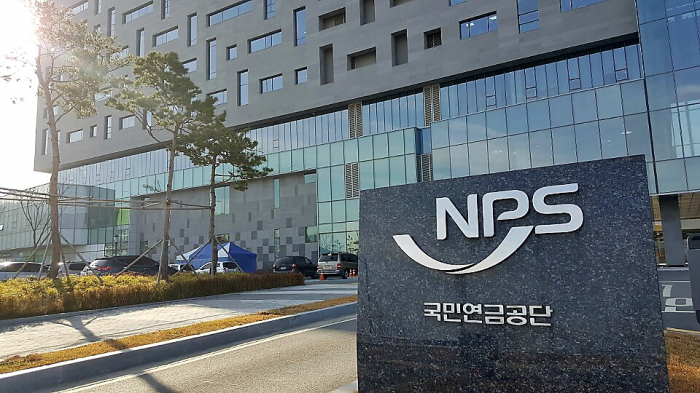Pension funds
Korea’s NPS to be in red in 2022 with 5.3% loss in Jan-Oct
NPS loses 20.5% and 8.2% from South Korean shares and bonds, respectively, while enjoying 15.6% gain from alternative assets
By Jan 01, 2023 (Gmt+09:00)
2
Min read
Most Read
LG Chem to sell water filter business to Glenwood PE for $692 million


KT&G eyes overseas M&A after rejecting activist fund's offer


Mirae Asset to be named Korea Post’s core real estate fund operator


StockX in merger talks with Naver’s online reseller Kream


Meritz backs half of ex-manager’s $210 mn hedge fund



South Korea’s National Pension Service (NPS), the world’s third-largest such fund, is poised to report an annual loss in 2022 for the first time in four years as the global financial markets tumbled on interest rate hikes of major central banks, especially the US Federal Reserve.
NPS, which managed 915.3 trillion won ($724.7 billion) in assets as of Oct. 31, 2022, reported on Dec. 30 that it saw a cumulative loss of 5.29% on investment, or 51 trillion won, in the first 10 months of last year. That compared with a 7.06% loss in the first nine months of last year.
The pension fund lost 20.45% from South Korean shares, 4.84% from overseas stocks and 8.21% from domestic bonds in the January 2022-October period. On the other hand, it achieved a 15.64% gain from alternative assets, which made up 16.6% of its assets under management (AUM), and a 4.74% profit from foreign bonds.
NPS last reported an annual loss in 2018 when stock markets lost ground on the US-China trade war and worries about a global economic slowdown.
HIT BY GLOBAL INTEREST RATE HIKES
“Stocks at home and abroad suffered from uncertainties such as monetary policy tightening in major countries and concerns over economic slowdown and the prolonged war by Russia, which caused the loss on equity investment,” the fund said on the losses in the first 10 months of 2022 in a statement.
“Valuation losses in bonds at home and abroad also increased on steep rises in interest rates due to the Fed’s series of hikes in its policy rates.”
The US central bank ramped up the fed funds rate by a total of 425 basis points (bps) last year including a fourth straight 75-bp raise to a targeted range between 4.25% and 4.5%, the highest level in 15 years.
Such aggressive tightening dampened global financial markets.
South Korea’s main Kospi lost 22.97% in the January-October period, while the MSCI ACWI ex-Korea skidded 20.34%. NPS reported a smaller loss from overseas stocks as the dollar’s value against the South Korean won currency rose 19.7%.
Bond yields also surged, hurting the fund’s investments in debts. The highly liquid South Korean government bond yield with three-year maturities jumped 238.7 bps in the period and the 10-year bond yield jumped 199.2 bps.
Write to Byeong-Hwa Ryu at hwahwa@hankyung.com
Jongwoo Cheon edited this article.
More to Read
-
 Pension fundsNPS posts 7% investment loss in Q1-Q3 as equities, bonds plunge
Pension fundsNPS posts 7% investment loss in Q1-Q3 as equities, bonds plungeNov 29, 2022 (Gmt+09:00)
2 Min read -
 Central bankBOK may raise rates by 50 bps again on Fed, inflation
Central bankBOK may raise rates by 50 bps again on Fed, inflationNov 03, 2022 (Gmt+09:00)
2 Min read -
 Pension fundsKorea's NPS posts 8% loss from investment in H1 2022
Pension fundsKorea's NPS posts 8% loss from investment in H1 2022Aug 30, 2022 (Gmt+09:00)
2 Min read
Comment 0
LOG IN


